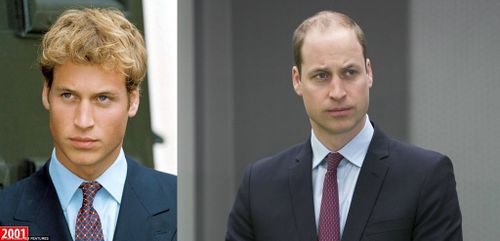Balding
Balding a.k.a Norwooding, is a process whereby one's hairline recedes. In the incelosphere, this is widely considered to be a characteristic common among involuntary celibates.
Women tend to consider balding unattractive (arguably not nearly as unattractive as an underdeveloped jawbone or height below 5'7" or 170cm), because it is an early sign of old age (mortality “knocking on the door”) and loss of valuable youth. It also alters the proportions of the face, and removes the framing of the face that hair generally provides. It can also fully reveal an unideal skull shape.
Looksmaxxing for balding men[edit | edit source]
Hair loss occurs when a hair follicle atrophies: this mechanism is activated by DHT, a hormone produced by men in testicles and prostate. This hormone during puberty provides the development of secondary sexual characteristics: penis growth, testicles size, beard, body hair, male dimorphism which are a wide jaw and chin, low-set brow ridge, thick wrists and narrow hips.
DHT, when puberty is over, starts activating the process of hair loss: in some men this process is so slow that it takes 20 years to recede the hairline by 1cm, while in other men hair loss is so fast that they have already lost half of their scalp hair at 20 years old.
The DHT hormone interacts with the hair follicle by blocking the blood vessel that feed it, thus there are two chemical substances able to stop hair loss: minoxidil, a chemical that increases the blood flow to the hair follicle, and finasteride, a drug that reduces systemic DHT levels by 60%. Dermarolling has also been found to be helpful. These treatments, however, are not permanent, unless you keep taking them for the rest of your life. Hence, many men will just accept their hair loss and possibly even shave their hair off, even if it is often detrimental to their SMV.
In some cases (<5%), balding can be caused by reasons other than male pattern baldness, such as nutritional deficiencies or stress. It is important to consume enough protein, iron, vitamin D and other vitamins.[1]
Finasteride[edit | edit source]
Finasteride is the most FDA-approved drug to stop hair loss, however about 3% of users face sexual side effects like gyno, impotence and low sexual drive.
Dutasteride[edit | edit source]
Dutasteride is the most powerful DHT blocker, able to reduce DHT levels by 80%. Obviously, the likelihood of facing sexual side effects is much bigger.
Minoxidil[edit | edit source]
Minoxidil can widen the blood vessels in your scalp and thus improve the blood flow to the hair follicles. This can help stop, or even reverse, hair loss. In one study, 84% of men found it to be at least somewhat effective for their hair loss. Minoxidil only has minimal side effects.[2]
Hair system[edit | edit source]
Hair System is a modern wig produced with real human hair: it is glued on the bald scalp and looks like real hair: this is the only method for advanced hair loss stages, when a man does not have enough hair follicles even for a hair transplant
Hair Transplant[edit | edit source]
This surgical procedure consists in collecting hair follicles on the back of the skull, and transplanting them over the forehead. This method is considered is not well-liked by PSL users because hair transplant usually provides a spare-haired scalp that leaves the skull still visible
Topical approach[edit | edit source]
Some PSL users think topical Finasteride will stop hair loss without reducing systemic DHT level: the truth is even a minuscule dose of Finasteride and RU applied on the skin is able to penetrate the blood flow and reach the Testicles to stop the DHT production in the whole body.
